LEG PRESS VS. SQUAT FOR LOWER BODY GAINS
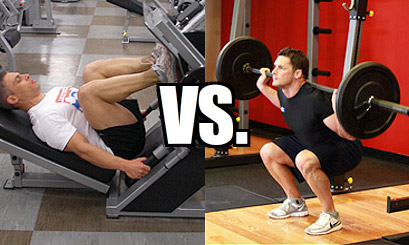
Basic barbell squats have been considered the “king” of lower body exercises for as long as man has been strength training, and it’s certainly a title that is well deserved.
Squats are arguably the single most demanding lift that you can possibly perform in the gym and deliver a very long list of benefits when it comes to improving muscle growth, total body strength, athletic performance, flexibility and even injury prevention.
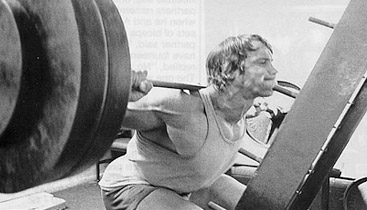
They’re a highly productive muscle building and strength gaining exercise that simultaneously activates many major muscle groups including the quads, glutes, hamstrings, spinal erectors, abdominals and obliques…
They’re a highly functional lift, and the strength that you develop from squatting has direct carryover over to many real world daily activities…
They improve your ability to explode off the ground with maximum power and boost your sprinting speed and vertical leap as a result…
They improve the flexibility of your entire hip complex which helps to reduce your chances of injury while improving performance in and out of the gym…
And they allow you to develop greater overall core strength for improved performance on other basic compound lifts and while protecting your lower back at the same time…
Yes, there’s no question about it: squats are a highly effective and efficient exercise, and unless there’s a specific reason why you can’t perform them, consistent squatting should probably be included as part of your overall leg training routine.
But how do squats compare to the leg press?
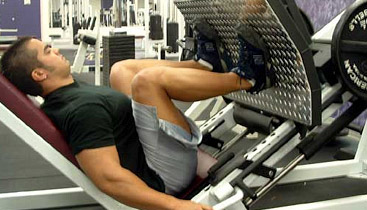
After all, both exercises utilize a very similar movement pattern and allow you to effectively overload your quads for increased lower body size and strength.
Is one better than the other? What are the advantages and disadvantages of each? Which one should you ultimately pick?
Leg Press Vs. Squat For Lower Body Size & Strength
The main problem with the whole “leg press vs. squat” issue is that there’s no need to turn it into a “one or the other” argument in the first place.
When it all comes down to it, both lifts are simply individual tools that you can use as part of your complete leg training approach, and each one has its own unique benefits depending on the situation.
Although it often tends to get a lot of hate within “tough guy” circles of the bodybuilding community, the leg press is actually a perfectly viable muscle building exercise that delivers a reasonable list of specific advantages for a variety of situations…
Benefits Of The Leg Press:
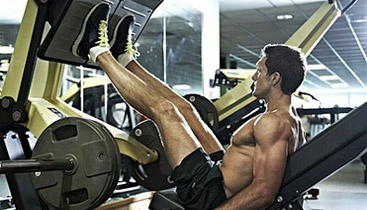
Leg Press Benefit #1: In some lifters who simply have poor body mechanics for squatting, the leg press may allow for better direct stimulation of the lower body by ensuring that it’s the muscles of the legs that reach failure first and not the lower back.
Those with particularly long femurs (upper legs) are often forced to bend forward excessively during the squat to prevent the knees from travelling too far forward, and this takes tension off the quads and turns the lift into as much of a lower back exercise as a leg exercise. In a situation like this, the leg press may actually be the more productive muscle building movement.
Leg Press Benefit #2: The leg press does not tax the cardiovascular system or the entire body as a whole in the same way that squats do since you won’t have to worry about balancing a heavy barbell on your back throughout the entire lift. This makes them great as a follow-up exercise to the squat by allowing you to perform additional volume for your legs without burning yourself out or sacrificing muscular performance.
Leg Press Benefit #3: Similar to the point above, the leg presses may be a superior choice if you’re aiming to train your legs in the higher 10-12+ rep ranges, since direct muscular overload may be compromised when squatting for high reps due to cardiovascular fatigue.
Leg Press Benefit #4: The leg strength that you develop from heavy leg pressing will have direct carryover to your squatting strength and even your deadlifting strength.
Leg Press Benefit #5: Although not true in all cases, those who simply cannot perform regular squats without lower back pain can often use the leg press as a comfortable alternative as long as proper form is used. The one-legged leg press is also a great option here since it allows you to train your legs with a high level of intensity while using a relatively light load.
These are just a few of the specific benefits that a basic 45 degree leg press or seated leg press can deliver as part of your leg workout.
I know that many of the “hardcore” bodybuilders and powerlifters out there probably won’t agree with this or want to hear it, but despite the many benefits of squats that I outlined previously, the simple reality is that they’re still not a mandatory lift to perform as part of your workout.
Should you do them if you’re physically able to? In most cases, yes.
Do you HAVE to do them to build significantly large and strong legs? No.
Any exercise that places the targeted muscles under sufficient tension and that allows you to consistently increase the weight over time will produce significant gains in size and strength, and the leg press (as well as other options outside of traditional squats such as lunges and step-ups) can definitely accomplish that for you.
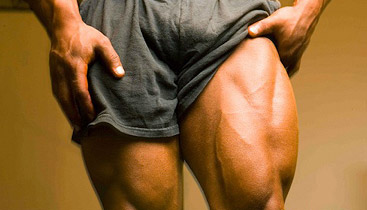
Again, squats certainly are an awesome exercise and are without question the most productive lower body lift out there, but to say that you can’t build big, strong legs without them is just downright false.
I’m obviously not trying to discourage anyone from squatting, and I’m certainly not saying that the leg press is a “better” exercise or that it should be used as a direct replacement for the squat…
Again, all I’m trying to point out there is that each lift should be viewed as one potential option in your overall training toolbox, and each one can have its own specific benefits and drawbacks depending on the situation.
Sure, in a direct head-to-head comparison the squat will likely be the superior overall lift for most people, but that doesn’t mean you have to pick one or the other.
Here’s how I’d sum the whole “leg press vs. squat” issue up…
Leg Press Vs. Squat: The Bottom Line
1) If you’re limited on time or equipment, or you’re simply wanting to follow the most basic routine possible with only one compound quad exercise included, then choose squats as your primary exercise. Although both exercises are beneficial in their own way, if I had to pick one, I’d definitely go with squats.
2) If you’re like most trainees and will be performing multiple quad exercises in your routine, then you can simply include a combination of both squats and leg presses. Squats should be treated as your primary compound exercise, with leg presses being used as a secondary lift to provide additional volume for your legs.
3) If you can’t perform squats (or if you’re not a bodybuilder who is looking to maximize muscle growth and you just don’t want to perform them), just know that using leg presses as your main lower body compound lift will still produce significant gains in size and strength as long as you apply progressive overload.
Squats are a great exercise, but there’s nothing “magical” about them and you absolutely can still build an impressive lower body without them.
Side Note: Some people like to point out that squats are far and away the superior exercise due to their effects on boosting testosterone and growth hormone levels in the body.
It should be noted that this point is almost certainly a non-issue, since small temporary spikes in these hormones is highly unlikely to have any direct measurable impact on bottom line muscle growth, strength gains or fat loss.
In order for testosterone and growth hormone to have any real effects here, the levels of each hormone need to be elevated very significantly and maintained over time.
Even if squats do produce a higher increase of test/GH in comparison to the leg press, the difference is likely small and irrelevant in the big picture.
If you found this article helpful, make sure to sign up for your FREE custom fitness plan below...




